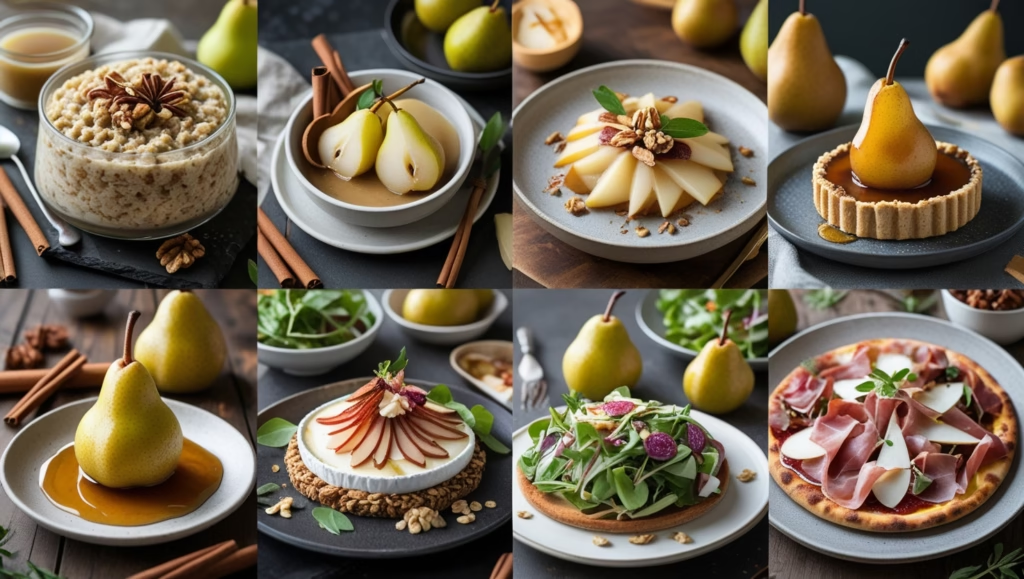Do you know that Pears are a beloved fruit enjoyed around the world for their sweet, subtle flavor and juicy texture. But if you’ve bitten into one and found it to be crisp or even hard, you might wonder: Are pears supposed to be crunchy? The answer isn’t as simple as “yes” or “no.” It depends on the pear variety, ripeness, and even personal preference. Let us explore the ideal texture of pears, how to tell when they’re ready to eat, and which types are best for different tastes.
Table of Contents
Are Pears Supposed to Be Crunchy
The Natural Texture of Pears: Soft or Crunchy?
Pears have a wide range of textures, depending on their variety and ripeness. Some are naturally firm and crunchy, while others are meant to be soft and buttery. Most commonly, pears are harvested while still firm and allowed to ripen off the tree.
Here’s a breakdown:
- Unripe pears tend to be crunchy, slightly gritty, and not as sweet.
- Ripe pears become softer, juicier, and more flavorful as they ripen.
So, are pears supposed to be crunchy? If they’re unripe, yes. But most pear lovers prefer them soft and juicy, which is the intended texture once they fully ripen.
Which Pears Are Soft and Juicy?
If you enjoy pears that melt-in-your-mouth, are delicious, you’ll want to choose specific varieties known for their soft and juicy texture when ripe.
As per my knowledga, Here are the best soft and juicy pears:
- Bartlett Pears: These turn from green to yellow and become incredibly soft, sweet, and aromatic.
- Comice Pears: Known for their dessert-like quality and smooth texture.
- Anjou Pears (especially Red Anjou): Slightly firmer than Bartlett but still juicy when ripe.
- Bosc Pears: Often eaten firm, but they soften beautifully when ripened.
If you’re in search of sweetness and that classic juicy pear experience, stick with these varieties and allow them to ripen at room temperature.
Crunchy vs. Soft: Which Texture Is Better?
Choosing between crunchy and soft pears really comes down to personal taste and intended use.
Soft pears are ideal for:
- Snacking
- Baking (like in pies or crisps)
- Pairing with cheese
Crunchy pears work well for:
- Salads (they hold their shape)
- Slicing for fruit trays
- Pickling or poaching
Some people prefer the firm bite of an unripe pear, while others love the juicy tenderness of a ripened one. There’s no wrong way to enjoy a pear—as long as it suits your palate!
Unripe Pear Benefits: Is Crunchy Actually Good for You?
Interestingly, unripe pears—while not as sweet—do offer unique health benefits. The firmer, crunchier texture comes from higher fiber and lower sugar content.
Here are a few unripe pear benefits:
- High in insoluble fiber, which aids digestion and prevents constipation.
- Lower glycemic index, making them a better option for people managing blood sugar.
- Rich in antioxidants, especially when the skin is eaten.
That said, some people may experience digestive discomfort if they eat pears that are too unripe. So moderation and proper ripening are key.
How to Tell If a Pear Is Ripe
Understanding how to tell if a pear is ready to eat can help you enjoy it at its peak.
Follow this quick ripeness check:
- Press the neck (near the stem) gently with your thumb.
- If it yields slightly, it’s ripe and ready to eat.
- If it’s firm, let it ripen for a few more days at room temperature.
Pro tip: Store ripe pears in the fridge to slow down further ripening and extend freshness.
Conclusion
So, are pears supposed to be crunchy? They can be—but that usually means they’re not ripe yet. For the classic pear experience, allow them to soften. If you enjoy a crunch, stick with firmer varieties or eat them slightly underripe. No matter how you slice it, pears are a nutritious, versatile fruit that fit into every diet and dish.
FAQs
Are pears supposed to be soft or crunchy?
Pears can be both, depending on their variety and ripeness. Most pears are harvested when firm and become soft and juicy as they ripen. So while they might be crunchy when unripe, they’re usually meant to be eaten soft.
Is it better to eat pears hard or soft?
It depends on your preference and use. Soft pears are sweeter and better for snacking or baking, while hard pears are firmer, less sweet, and ideal for slicing into salads or eating as a crisp snack.




